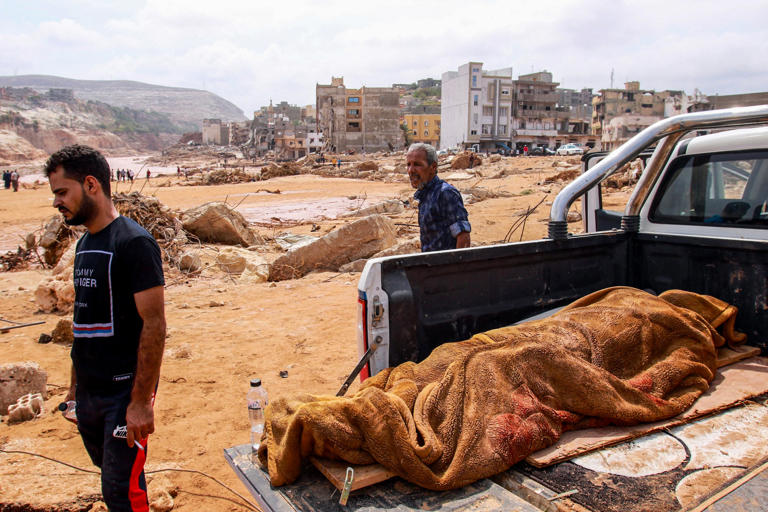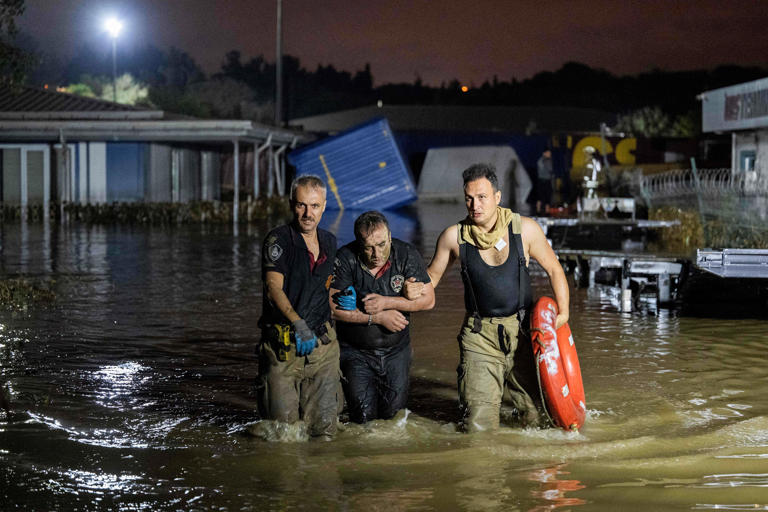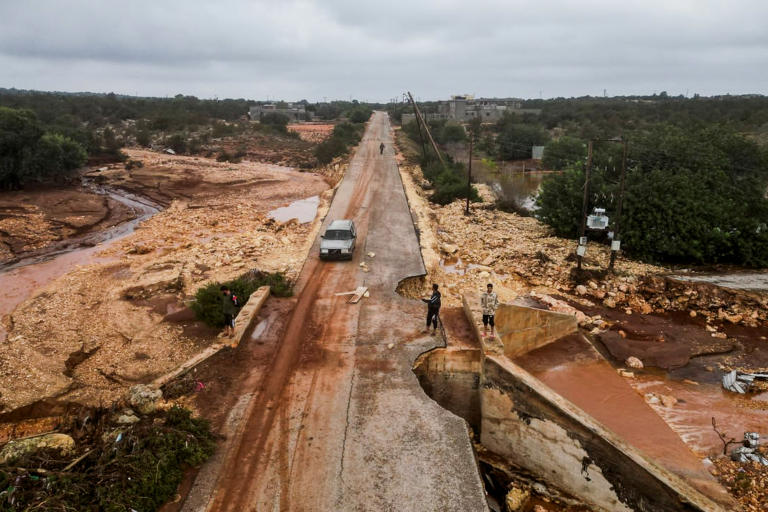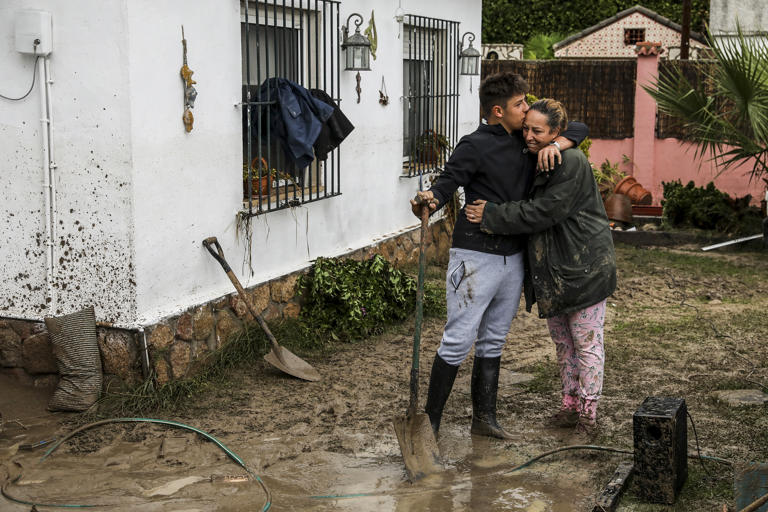CLIMATE CRISIS
Eight catastrophic floods in 11 days: What’s behind intense rainfall around the world?Story by Denise Chow •NBC
The catastrophic flooding in Libya that has left as many as 10,000 people feared dead is just the latest in a string of intense rainfall events to hammer various parts of the globe over the past two weeks.
In the first 11 days of September, eight devastating flooding events have unfolded on four continents. Before Mediterranean storm Daniel sent floodwaters surging through eastern Libya, severe rains inundated parts of central Greece, northwestern Turkey, southern Brazil, central and coastal Spain, southern China, Hong Kong and the southwestern United States.
Seeing this many unrelated extreme weather events around the world in such a short period of time is unusual, said Andrew Hoell, a research meteorologist at the National Oceanic and Atmospheric Administration’s Physical Sciences Laboratory.

People walk past the body of a flood victim in Derna, Libya, on Sept. 11, 2023. (AFP - Getty Images)© AFP - Getty Images
“Sometimes we have a clustering of these events, whether it’s in a given country, given hemisphere or globally,” he said. “And it seems like right now, globally, this is prime time for a number of flooding events.”
Like with many other forms of extreme weather, scientists say climate change is likely having an impact on rainfall and flooding, but understanding precisely what that relationship is can be tricky.
In general, studies have shown that global warming is intensifying the planet’s water cycle. Warmer temperatures increase evaporation, which means a warmer atmosphere can hold more moisture. As a result, when storms occur, they can unleash more intense precipitation and thus cause severe flooding.

People mourn during the burial of a victim in Mucum, Rio Grande do Sul, Brazil, on Sept. 9, 2023. (Claudia Martini / Xinhua News Agency via Getty Images)© Claudia Martini
Researchers have observed those changes over time as the world warms. Since 1901, global precipitation has increased at an average rate of 0.04 inches per decade, according to the Environmental Protection Agency.
However, a number of factors can influence flooding events and their severity, and teasing out the fingerprints of climate change when they all interact can be challenging, Hoell said.
“From a 1,000-foot view, it’s definitely true that if you have higher temperatures, you have more water vapor, and therefore you can have more precipitation fall from the sky,” he said. “But when you look at a specific event, and the specific set of physical processes relevant to that event, it then becomes difficult to attribute every single process in that causal chain.”
For one, the types of extreme weather that caused each of the eight catastrophic flooding events in September had different origins.

A flooded neighborhood in Larissa, Greece, on Sept. 10, 2023. (Nick Paleologos / SOOC/AFP via Getty Images)© Nick Paleologos
It was a Mediterranean storm named Daniel that dumped heavy rain over central Greece and Libya. Typhoon Haikui and its remnants lashed Hong Kong and southern China with record-breaking rainfall, waterlogging urban and rural areas, destroying roads and causing more than 100 landslides.
Torrential downpours caused flash flooding in central and coastal regions of Spain, northwest Turkey and thousands of miles away in the Brazilian state of Rio Grande do Sul.
And fast-moving thunderstorms over southern Nevada earlier this month caused flash flooding across the region, swamping the Las Vegas Strip and stranding more than 70,000 people at the Burning Man festival in Black Rock Desert.

A man is rescued and evacuated during flooding in Istanbul on Sept. 5, 2023. (Yasin Akgul / AFP - Getty Images file)© Yasin Akgul
With certain types of extreme flooding events, such as those associated with Mediterranean cyclones like Daniel, there simply isn't enough data to observe shifts over time.
“We really don’t have a long enough sample or record to be able to detect a change, because they’re not really that common of an occurrence,” Hoell said.
In other cases, local factors such as how wet or dry the ground is, or an area’s basic topography, can have an enormous influence on how floods develop — and their consequences.

A damaged road after a powerful storm and heavy rainfall hit Shahhat, Libya, on Sept. 11, 2023. (Ali Al-Saadi / Reuters)© Ali Al-Saadi
Beyond loss of life and property, floods increase the risks of people being exposed to waterborne pathogens, which have important implications for outbreaks of deadly disease.
Hoell said the number of devastating floods this month is distressing, but said he's especially concerned about the situation unfolding in Libya.
“If you look at the damage and the amount of people who have lost their lives,” he said, “it just blows your mind.”

A woman hugs her son as they clear her house from mud following heavy rain in Villamanta, Spain, on Sept. 4, 2023. (Pablo Blazquez Dominguez / Getty Images file)© Pablo Blazquez Dominguez
This article was originally published on NBCNews.com
No comments:
Post a Comment